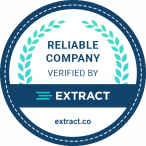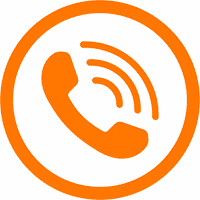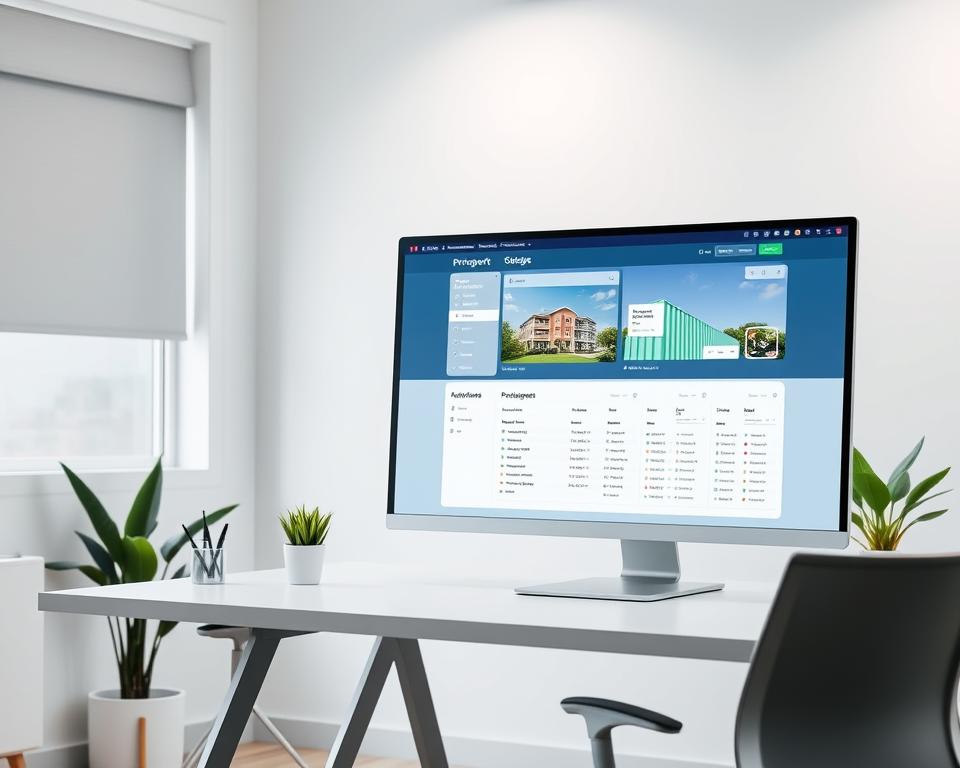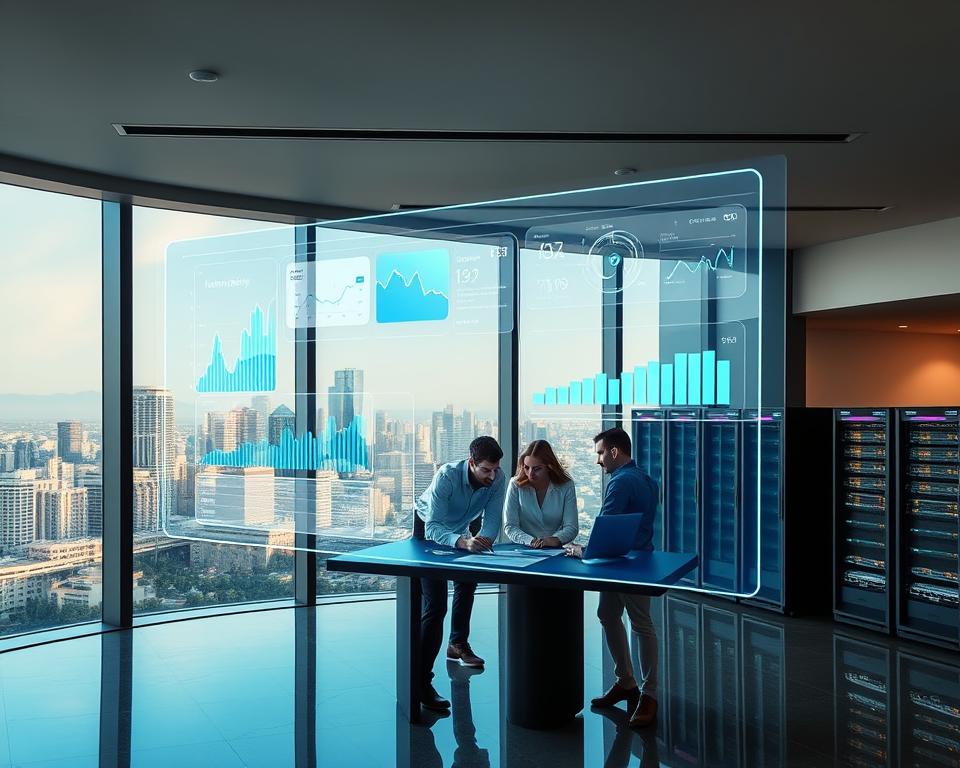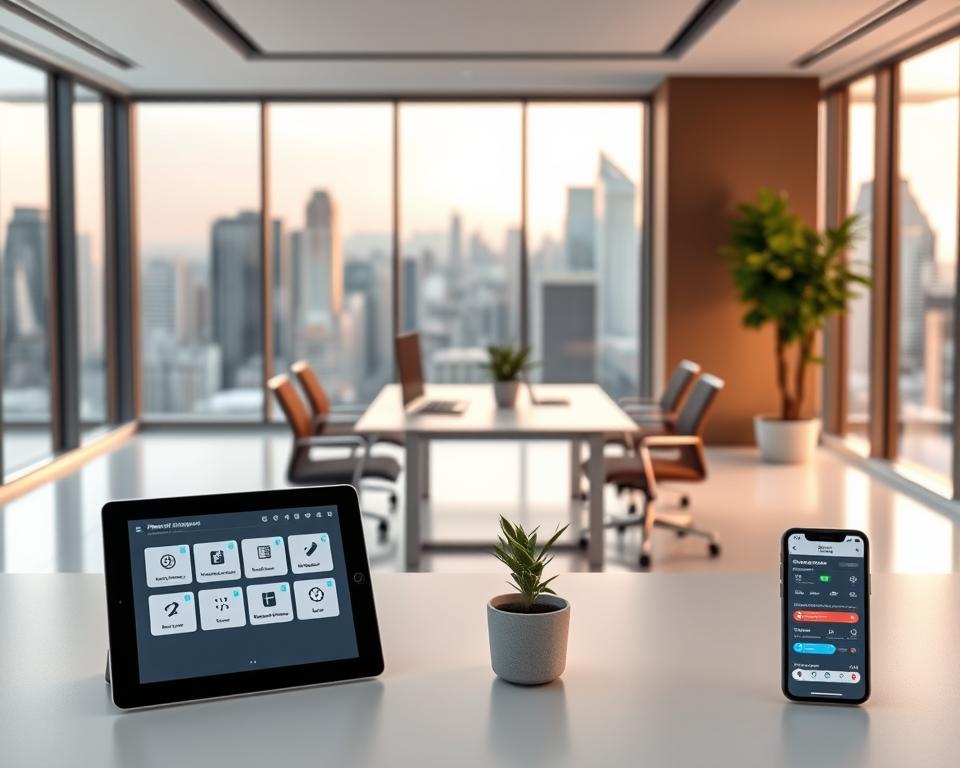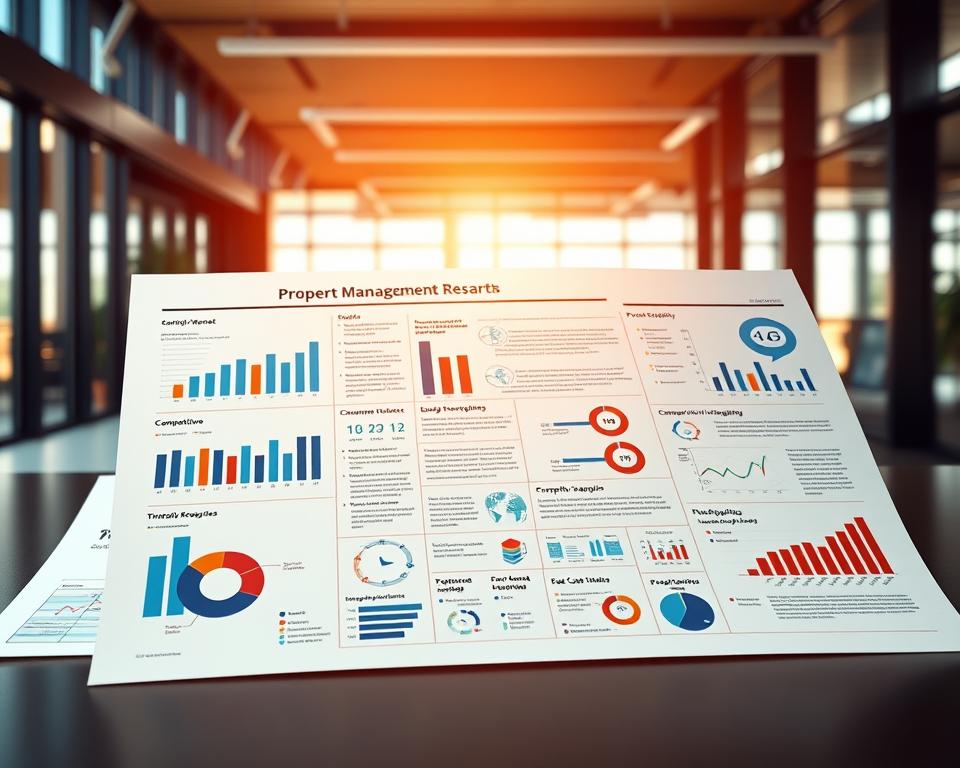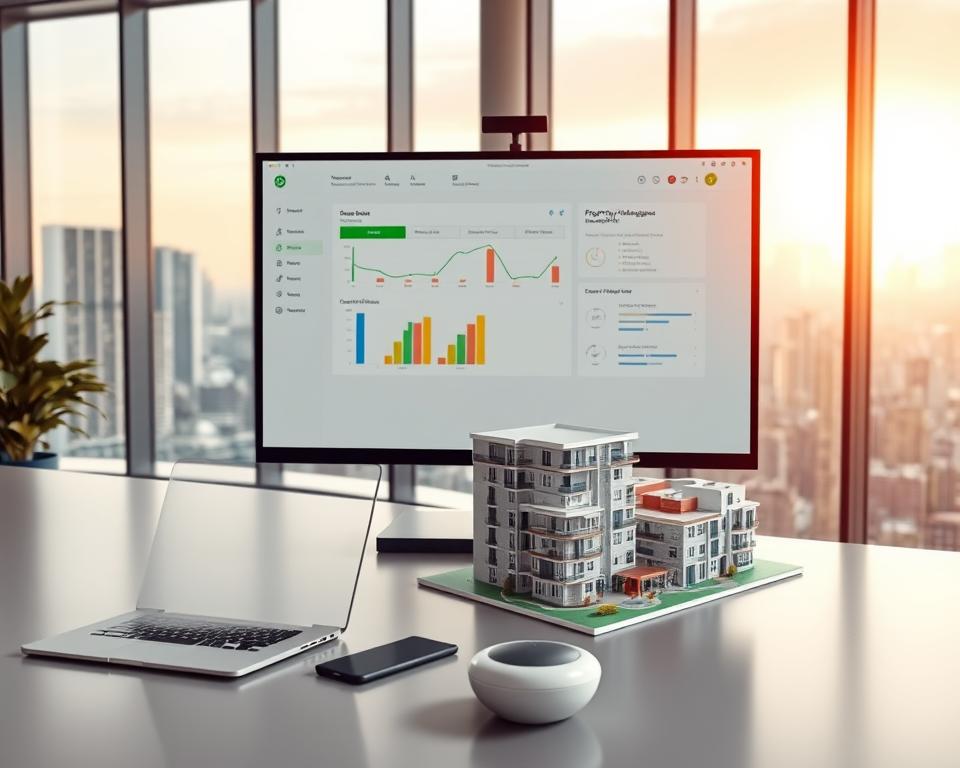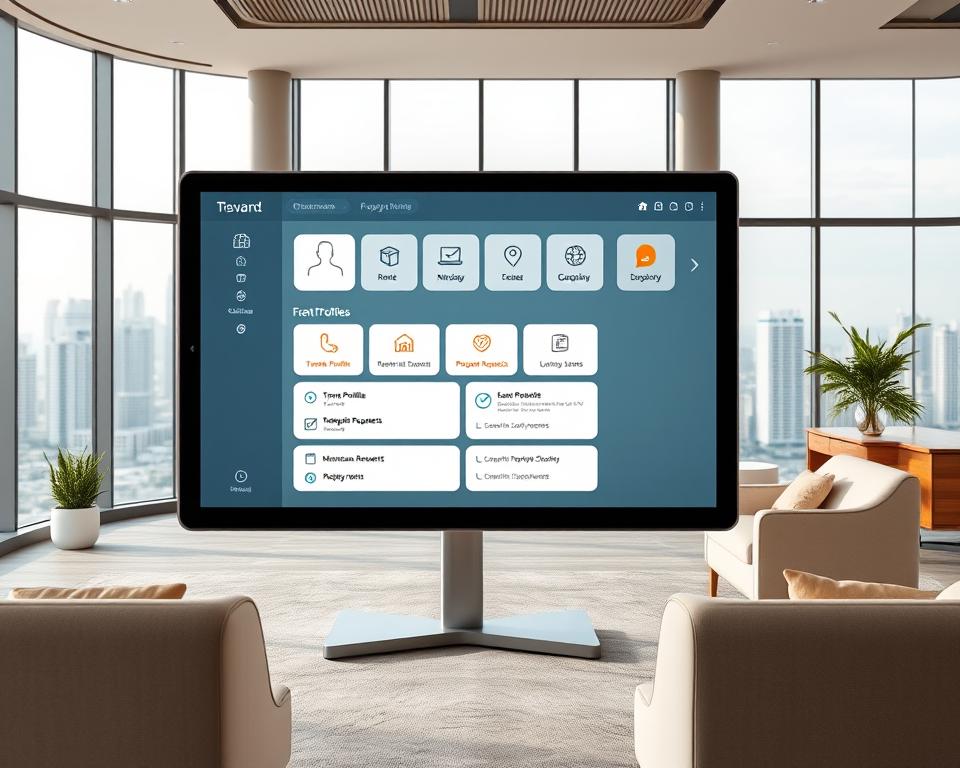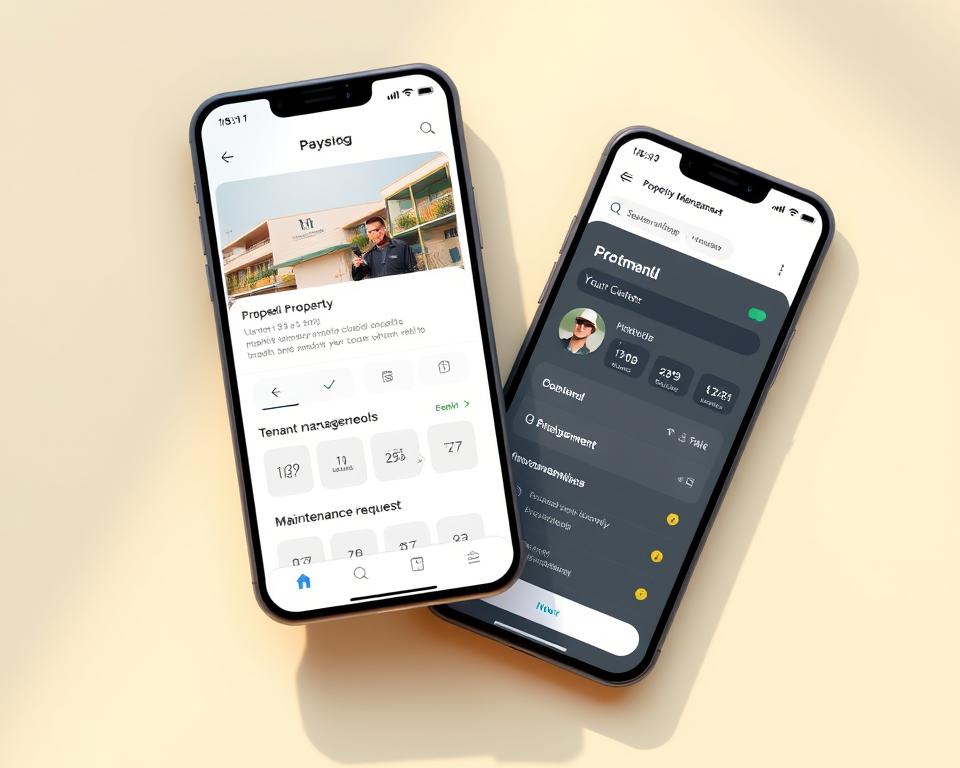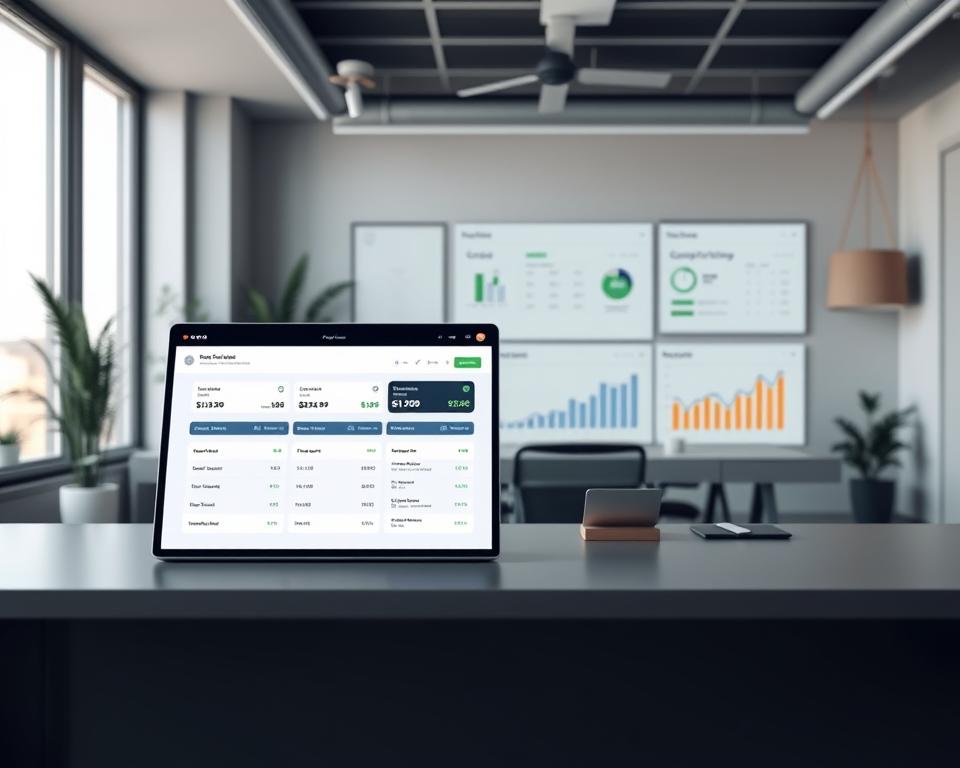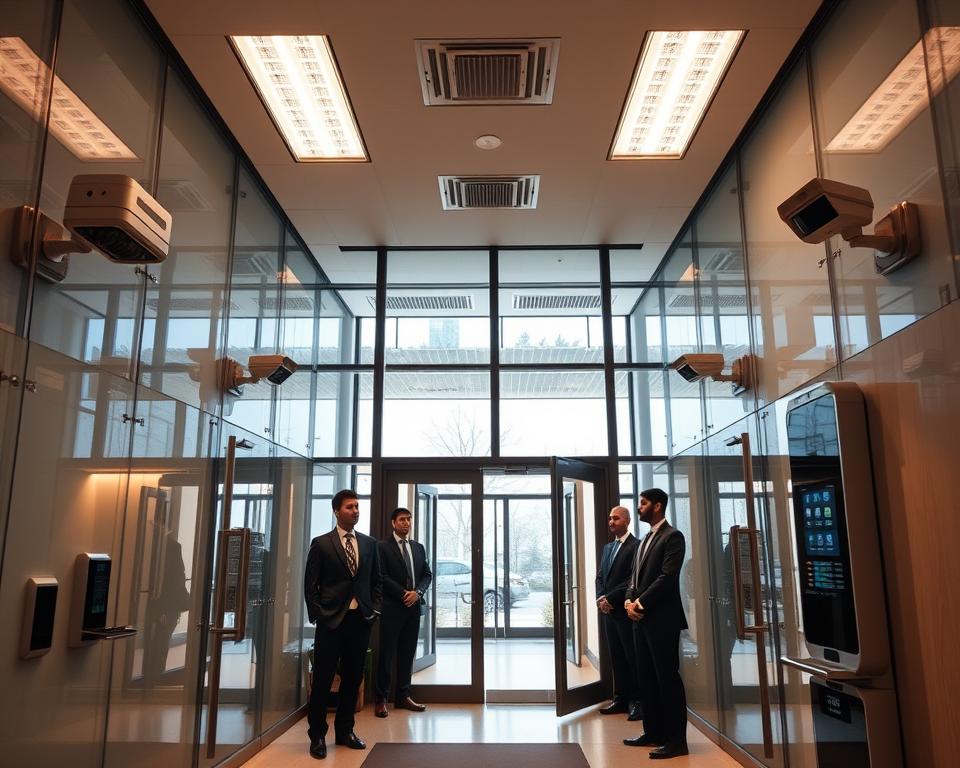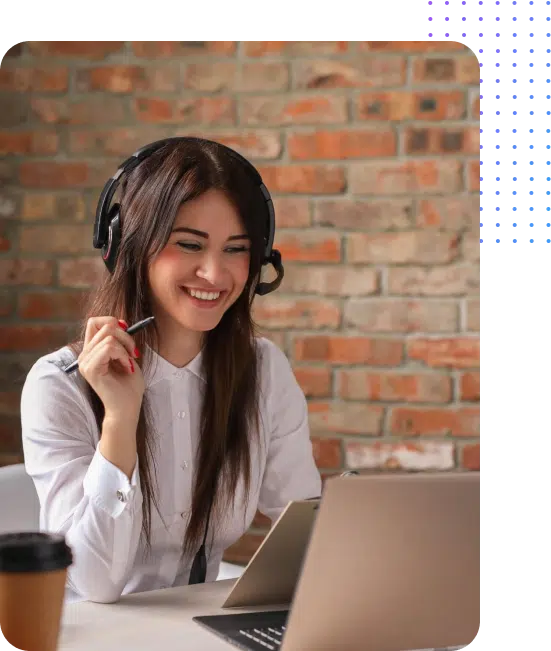Creating a property management app can change how rental properties are managed. It makes communication between landlords and tenants easier and streamlines operations. A good app can make the rental experience better, increase profits, and cut costs. To learn more, visit property management software development and see how a custom solution can help.
Investing in a property management app can make managing rental properties more efficient and convenient. It can include features like online payments, maintenance requests, and lease tracking. All these can be accessed through a simple landlord tenant app.
Table of Contents
Introduction to Property Management Apps
In this article, we’ll look at how to create a property management app. We’ll cover the key features, technical setup, and development process. We’ll also talk about the importance of knowing what users need and doing market research. Plus, we’ll discuss the need for security and following rules.
Key Takeaways
- Property management software can streamline operations and enhance communication between landlords and tenants
- A well-designed landlord tenant app can maximize profitability and reduce costs
- Online payment systems and maintenance requests can be integrated into a property management app
- Understanding user requirements and market research is crucial for developing a successful property management software
- Security and compliance considerations are essential for protecting user data and ensuring a secure rental experience
The Evolution of Property Management Software
The property management world has changed a lot lately, thanks to real estate technology. The need for better ways to manage rental properties has grown. This has led to more use of rental property management software. It helps landlords and property managers work better and talk more easily with tenants.
For more info on property management app development, check out property management app development solutions. Technology has changed how property managers handle things like rent, maintenance, and leases. With real estate technology, they can do less paperwork and serve their tenants better.
The good things about rental property management software are many. It makes communication better, work more efficient, and tenants happier. As the property management field keeps growing, we’ll see even more new ideas. These will change how we manage and keep properties.
Essential Features for Modern Property Management Apps
Landlords and tenants need various features to make their lives easier. A good landlord software can greatly improve their experience. Key features include managing properties, handling rent payments, tracking maintenance, and communication tools.
User experience and design are crucial in property management apps. A simple and easy-to-use interface helps avoid mistakes. Features like real-time updates and push notifications keep everyone informed and on track.
Some must-have features in modern apps are:
- Property listing and management
- Rent payment processing
- Maintenance request tracking
- Communication tools
These features help landlords and tenants manage their tasks better. This makes property management apps vital for the real estate world.
By focusing on these features and user experience, apps offer a complete and easy experience. This makes landlord software a key tool for today’s real estate industry.
Understanding User Requirements and Market Research
When making a property management app, knowing what landlords and tenants need is key. Good landlord tenant communication is vital for a smooth rental experience. By doing property management market research, developers can find out what features are most important to their users.
Looking closely at the market can reveal trends and new ideas. For example, a study by the National Association of Realtors showed 71% of renters value online rent payment. This shows that apps need to make paying rent easy and safe.
Developers should think about a few things:
* Making the app easy for everyone to use
* Creating secure ways to pay
* Adding tools for good landlord tenant communication
* Keeping up with the latest property management market research to stay competitive
By really getting to know what users need and doing deep market research, developers can make apps that people will love. This leads to more users and happier customers.
Technical Architecture and Development Framework
For property management software development, a solid technical plan is key. It must consider scalability, reliability, and security. A strong plan lets the app handle lots of users and data smoothly.
Choosing the right tech stack is vital for technical architecture. This means picking the best programming languages, frameworks, and databases. Important factors include scalability, reliability, and security.
- Scalability: The app’s ability to grow with more users and data
- Reliability: Keeping the app running smoothly with little downtime
- Security: Protecting user data and keeping it safe from unauthorized access
A good database is also crucial for managing user data. This includes data modeling, schema design, and optimizing queries. By focusing on the technical side, developers can build a reliable and scalable app for landlords and tenants.
By focusing on technical architecture and development, developers lay a strong foundation. This sets the app up for success and growth in the long run.
Core Functionality Development for Landlords
When it comes to landlord software development, the core functionality is key. It includes features like property listing, rent payment, and maintenance tracking. The property management core functionality should make tasks easier and improve communication.
Developing these features needs a focus on user experience and design. A good design helps landlords manage their properties well. It also makes it easy for tenants to find important info. Some important features to include are:
- Property listing and management
- Rent payment processing
- Maintenance request tracking
By adding these features and focusing on user experience, landlords can get a lot out of landlord software development
Creating a Property Management App for Landlords & Tenants: Step-by-Step Guide
Building a property management app needs a clear plan. It must meet the needs of both landlords and tenants. A good property management app development guide helps make this easier. Start by planning and writing down what the app will do, thinking about what both sides need.
When making a landlord tenant app, it’s important to know the key features. These might include tracking rent, handling maintenance, and managing leases. Adding these features helps improve communication and lowers the chance of disagreements.
The app-making process has several steps, like design, making a prototype, and testing. It’s crucial to make the app easy to use for everyone. Here are some important things to think about at each stage:
- Planning and documentation: Define the app’s features and functionalities
- Design and prototyping: Create a user-friendly interface and test its usability
- Development: Build the app using a suitable technology stack and ensure its security and scalability
By following this guide and thinking about what both sides need, you can make a great property management app development guide. This guide will help you build the app smoothly and make sure it works well for everyone involved.
Tenant Portal Development and Features
Creating a tenant portal is key in property management. It gives tenants tools to manage their rentals better. A good portal helps with communication, payments, and makes the rental experience better. It’s important to think about what tenants need when making a tenant portal.
Important features of a tenant portal include online payments, maintenance requests, and access to documents like leases. These can be added through property management tenant features like automated payments and document systems. This makes managing properties more efficient.
Designing a user-friendly portal is also crucial. It should be easy to use and have a smooth experience. This can be done with clear language, simple menus, and easy-to-find features.
- Improved communication between tenants and property managers
- Streamlined payment processing and reduced late payments
- Enhanced tenant experience and satisfaction
- Increased efficiency and productivity for property managers
Investing in tenant portal development and adding important property management tenant features helps. It makes the rental experience better and strengthens tenant relationships.
Implementation of Payment and Financial Systems
When making a property management app, setting up payment and financial systems is key. This means adding property management payment processing for rent and other payments. It’s important to make these systems work well together to avoid mistakes.
When integrating payment and financial systems, think about security, following rules, and how easy it is to use. Security is crucial to keep financial info safe. It’s also important to follow laws about data protection. The system should be easy for everyone to use.
To make financial systems integration smooth, pick the right tech and design your database well. This helps manage data better and cuts down on errors. With strong payment and financial systems, apps can offer a safe and reliable service to users.
For more on making an app like Zillow, check out real estate app development resources. Focusing on payment and financial systems makes property management apps better and more satisfying for users.
Security and Compliance Considerations
When making a property management app, property management security and compliance considerations are key. They help keep user data and money safe. It’s important to use strong data protection, follow the law, and keep privacy high.
To keep the app secure and compliant, several steps can be taken:
- Use encryption for data sent and stored
- Do regular security checks and tests
- Follow laws like GDPR and HIPAA
Ensuring the app meets legal standards is crucial. This includes rules on data protection and privacy. By focusing on property management security and following the law, developers can gain user trust. They also keep a good reputation for being reliable and honest.
Testing and Quality Assurance Protocols
Creating a property management app needs strong property management app testing. This ensures the app meets high standards. It includes user acceptance, performance, and security tests, all key to quality assurance protocols.
These tests find and fix bugs. They make sure the app is stable, secure, and easy to use. By adding property management app testing to development, developers meet landlord and tenant needs. They also protect user data with strict quality assurance protocols.
User Acceptance Testing
This testing checks if the app works as planned and is easy for users. It’s a key step to catch any missed issues during development.
Performance Testing
Performance testing is crucial. It checks if the app can handle lots of users and data. This testing finds and fixes performance problems, making the app better.
Security Testing
Security testing is essential. It finds any weak spots that could harm user data. By doing thorough security tests, developers make sure the app is safe and keeps user info secure.
Deployment and Maintenance Strategy
When it comes to property management app deployment, a solid maintenance plan is key. It ensures the app works well, stays reliable, and keeps data safe. A good plan includes regular updates, backups, and watching for issues to avoid downtime and data loss.
Some important things to think about for a property management app deployment are:
- Scalability: The app should grow with more users and data without slowing down.
- Reliability: It should be up and running 24/7, with little to no downtime or errors.
- Security: It must protect user data and keep it safe from unauthorized access.
A well-thought-out maintenance strategy helps avoid problems. It includes updates, security fixes, and checks to find and fix issues early. This keeps the app working smoothly for its users.
By focusing on property management app deployment and upkeep, developers can make a top-notch app. It will meet the needs of landlords and tenants. Plus, it will stay secure, reliable, and able to grow over time.
Marketing and User Adoption Strategies
Creating a successful property management app is more than just coding. It’s about property management app marketing and user adoption strategies. These are key to growing your app and keeping users engaged. By knowing your audience, you can make marketing that speaks to them.
A good launch is key to getting people excited. Use social media, ads, and partnerships to make a splash. When users start using the app, make sure it’s easy and fun. They should quickly find what they need.
Launch Planning and User Onboarding
Here are some tips for launching and onboarding users:
- Find what makes your app special to stand out
- Make content and tutorials that help users get started
- Listen to user feedback to improve your app
Growth Strategies
To grow your app, use user adoption strategies like referral programs and loyalty rewards. Focus on making users happy and keep improving based on what they say. This way, your app will keep users coming back and attract new ones, leading to success in property management app marketing.
Conclusion
The real estate world is changing fast, thanks to technology. More and more people want property management solutions that make things easier. This is because they want better ways to manage properties, improve their living spaces, and handle money.
Developers can create apps that solve problems for both landlords and tenants. These apps should be easy to use, help with communication, and make payments safe. They also need to follow the law.
Technology is key for landlords and property managers to keep up with the times. A good app can make managing properties more efficient. It can also make tenants happier, leading to success in the long run.


